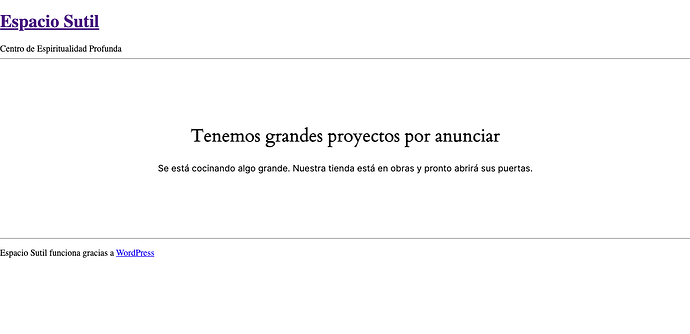I’m updating a site to Sage 11 and integrating WooCommerce (version 9.9.4).
I’m using the generoi/sage-woocommerce package to handle WooCommerce template overrides via Blade.
Everything seems to work fine — but only if I’m logged in. When not logged in, WooCommerce seems to fall back to its block-based templates instead of using my custom Blade files.
![]() When logged in
When logged in
The correct template loads:
resources/views/woocommerce/archive-product.blade.php
My log (using Acorn’s logging system) confirms:
[2025-06-22 14:33:32] development.DEBUG: 🟢 archive-product.blade.php loaded
Logged-in view (custom layout loaded):
![]() When not logged in
When not logged in
The template is ignored. The rendered page lacks the theme’s header/footer/layout.
It appears WooCommerce is using its block-based fallback (likely the cart/checkout block layout).
Anonymous view (unstyled block layout, missing header/footer):
➤ What I’ve checked
-
I have no content inside the Shop page (no shortcodes, no blocks).
-
The page is correctly set as the Shop page under WooCommerce → Settings → Products.
-
I’m using
theme.json(it’s a classic theme, not a block theme). -
generoi/sage-woocommerceis installed, discovered, and published. -
The file
resources/views/woocommerce/archive-product.blade.phpexists. -
I’m using Trellis + Bedrock + Sage 11.
-
I’m logging output via
Log::debug()inarchive-product.blade.php.
➤ Context and References
In this thread:
A similar issue was reported, and the solution was to replace blocks with shortcodes inside the WooCommerce pages (like Cart or Checkout) to force WooCommerce to use classic templates.
Also related:
https://github.com/woocommerce/woocommerce-blocks/issues/891
In WooCommerce 9.x+, the default pages (shop, cart, checkout) are created with block-based content by default. These do not use classic templates.
➤ My question
Is there a reliable way in Sage 11 (with generoi/sage-woocommerce) to force WooCommerce to use the Blade template for the Shop page?
Any workaround to disable the block-based fallback in WooCommerce 9.9.4 for the Shop page?
Thanks in advance!

